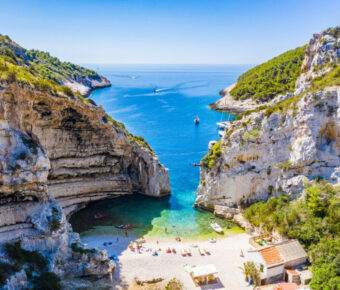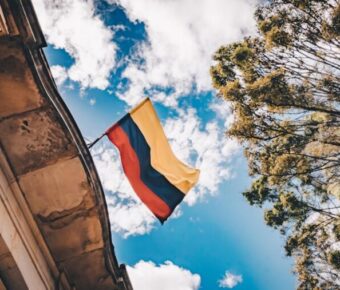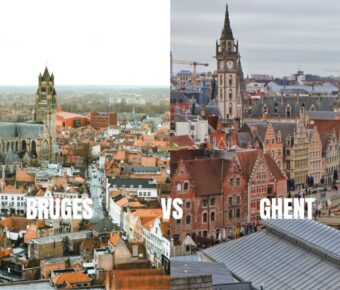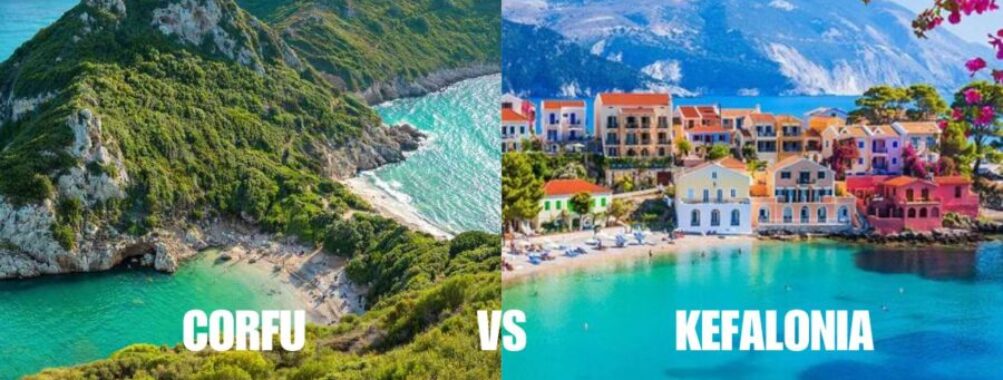
Corfu vs Kefalonia Travel: 7 Key Differences for Your Greek Getaway
Picking between Corfu and Kefalonia? It’s not just about which one looks better on a postcard.
Corfu buzzes with nightlife, Venetian flair, and a ton of tourist perks. Kefalonia, on the other hand, is for folks who want mountains, quiet beaches, and a slower rhythm. Both islands deliver those jaw-dropping waters and layers of history you can actually feel.
You’ll clock the difference the second you arrive. Corfu’s villages sprawl with pastel facades and lively cafes.
Kefalonia’s harbors? They’re sleepier, less touched by crowds.
Corfu gives you winding coastal drives and hidden coves, plus squares that stay busy well into the night.
Kefalonia trades that for fishing boats and a pace that dares you to slow down.
Seriously, pack light but don’t skimp on the travel gear—you’ll thank yourself later.
It’s less about which is “better.” Do you want the hum of a busy promenade, or the hush of a sunset over a nearly empty bay?
Table of Contents
- Key Takeaways
- Corfu vs Kefalonia: Quick Comparison
- Island Personalities and Vibes
- Pros and Cons for Different Travelers
- Getting There and Around
- Airports and Flight Options
- Ferry Connections and Island Hopping
- Local Transportation and Accessibility
- Beaches and Coastal Wonders
- Beaches in Kefalonia
- Corfu’s Coastline Highlights
- Hidden Coves and Secluded Spots
- Natural Landscapes and Outdoor Adventures
- Mountains and National Parks
- Hiking and Trekking Trails
- Water Sports and Activities
- Cultural Heritage and Historical Landmarks
- Venetian Influence and Architecture
- Ancient Ruins and Museums
- UNESCO Sites and Iconic Monuments
- Where to Stay: Best Towns and Villages
- Popular Resorts and Family Areas
- Authentic Fishing Villages
- Luxury and Boutique Accommodations
- Food, Drink, and Local Flavors
- Traditional Dishes of Corfu
- Kefalonia’s Culinary Specialties
- Tavernas, Wines, and Local Products
- Nightlife and Social Scene
- Corfu’s Vibrant Nightlife
- Kefalonia’s Relaxed Evenings
- Beach Clubs and Entertainment
- Unique Experiences and Hidden Gems
- Melissani Lake and Drogarati Cave
- Cultural Events and Festivals
- Filming Locations and Literary Ties
- Frequently Asked Questions
- What unique cultural experiences distinguish Corfu from Kefalonia for travelers seeking local immersion?
- Can you highlight the differences in the culinary scenes between Corfu and Kefalonia?
- What are the notable contrasts in landscape and nature between Corfu and Kefalonia?
- Could you shed light on the seasonal tourist influx in Corfu versus Kefalonia and its impact on the travel experience?
- How do the historical sites of Corfu compare with those in Kefalonia in terms of richness and visitor engagement?
- In terms of accessibility and transportation, what should travelers consider when choosing between Corfu and Kefalonia?
- Book Your Dream Experience
- More Travel Guides
Key Takeaways
- Corfu offers more nightlife and tourist-friendly amenities
- Kefalonia is quieter with dramatic natural scenery
- Both islands deliver stunning beaches and rich culture
Corfu vs Kefalonia: Quick Comparison
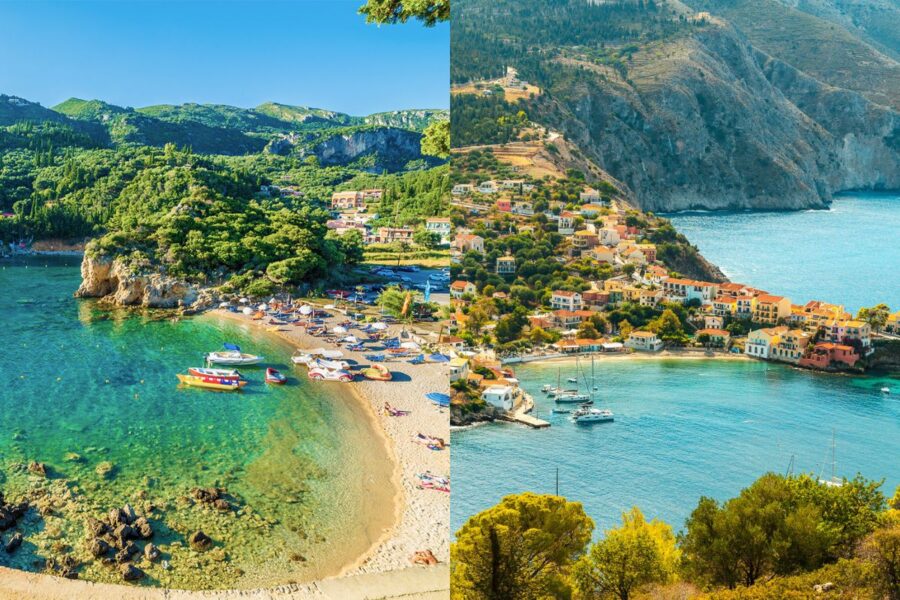
Sure, both islands sit in the Ionian Sea, but wow, do they feel different once you’re actually there.
Corfu leans into lively towns and layered history.
Kefalonia? It’s all about quiet coves and epic landscapes.
Your vibe will probably decide for you—are you chasing nightlife, or chasing peace?
Island Personalities and Vibes
Corfu has a cosmopolitan streak.
You’ll spot Venetian arches in Corfu Town, café squares that never seem to empty, and nightlife that can take you right into the next morning.
Getting around is a breeze thanks to the bus network and walkable old town.
Kefalonia moves at a gentler pace.
Mountains and pine forests frame beaches like Myrtos and Antisamos.
Villages are tiny, evenings are mellow, and you’ll need a car if you want to see the good stuff.
Corfu is basically a pocket-sized city with beaches.
Kefalonia? Think of it as one big, scenic park, dotted with villages.
Corfu hums; Kefalonia breathes. You’ll feel it.
Pros and Cons for Different Travelers
Corfu might suit you if:
- You want to mix beach time with museums, ruins, and a bit of nightlife.
- You’d rather not rent a car—buses and taxis have you covered.
- You’re into food variety, from cheap eats to white-tablecloth dining.
Kefalonia might suit you if:
- You crave fewer crowds and more wild nature.
- You don’t mind (or even like) driving to reach those secret beaches.
- You’re after quiet evenings—wine on the balcony, not clubbing till dawn.
Here’s a quick glance:
| Feature | Corfu | Kefalonia |
|---|---|---|
| Atmosphere | Lively, cultural, social | Relaxed, scenic, tranquil |
| Best for | History, nightlife, variety | Nature, beaches, slow travel |
| Car needed? | Not essential | Highly recommended |
Getting There and Around
Traveling between Corfu and Kefalonia isn’t rocket science, but you’ll want to plan ahead.
Both islands have international airports and ferry links to the mainland.
Local transport networks exist, but the details shift with the seasons.
If you’re coming in peak summer, book transport early—otherwise, you might get stuck with sold-out flights or ferries.
Airports and Flight Options
Corfu International Airport (CFU) is bigger and busier than Kefalonia’s.
In summer, low-cost flights pour in from the UK, Germany, and Italy.
Kefalonia International Airport (EFL) is a bit quieter, so you might end up connecting through Athens.
If you’re watching your wallet, poke around on flight search tools. Sometimes, flying into one island and out of the other actually saves you cash and time.
Both airports sit close to their main towns—about 3 km from Corfu Town, 8 km from Argostoli.
So you’ll get to your hotel in 20–30 minutes, tops.
Taxis and pre-booked transfers are easy to find, but brace yourself for high-season prices.
Ferry Connections and Island Hopping
No direct ferry links Corfu and Kefalonia, so you’ll need a mainland pit stop or another Ionian island in the mix.
Most folks go Corfu to Igoumenitsa (about an hour), then drive or bus down to Kyllini for ferries to Kefalonia’s Poros or Sami ports.
Ferry schedules flex with the seasons—expect more options in summer, fewer in winter.
If you’re feeling adventurous, you can weave in stops at Zakynthos or Lefkada for some classic island hopping.
Dragging bags between ports isn’t fun, so look into luggage storage for longer layovers.
It’s a sanity-saver if you’ve got time to kill between ferries.
Local Transportation and Accessibility
Buses connect major towns and some touristy spots on both islands, but don’t expect Swiss-level punctuality, especially outside summer.
Renting a car gives you the most freedom. Corfu’s roads are busier and better developed.
Kefalonia’s? More mountain curves, but the views are killer.
Scooters and ATVs are everywhere for short hops, though they’re best if you’re a confident driver.
In Corfu Town and Argostoli, just walk—parking is a headache.
Corfu’s tourist infrastructure is more built up, with better public transport and more taxis.
Kefalonia feels more spread out, so a car really opens things up.
Beaches and Coastal Wonders
The Ionian Sea doesn’t mess around—think clear, turquoise water and shorelines that don’t even look real sometimes.
One island might hit you with wild cliffs, the next with calm bays and sand you’ll want to nap on all afternoon.
Beaches in Kefalonia
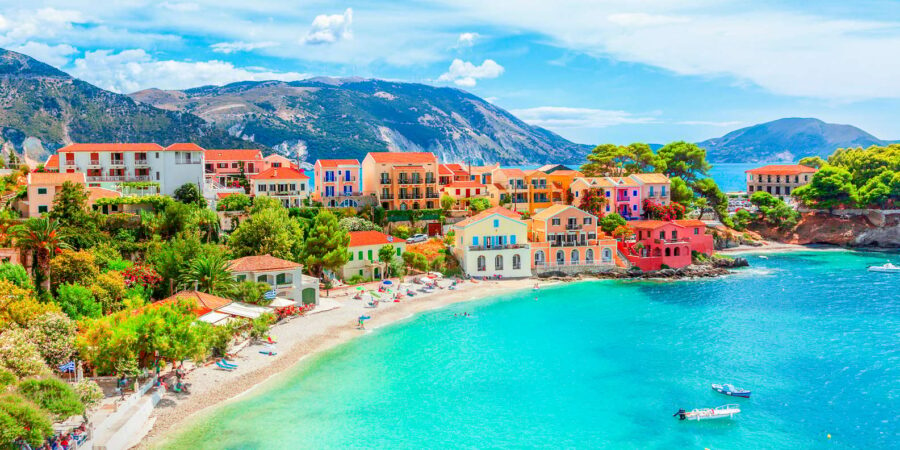
Kefalonia’s beaches are straight-up jaw-dropping, but don’t expect them all to be easy to reach.
Myrtos Beach is the showstopper—white pebbles, towering cliffs, and a winding drive that’s worth every hairpin turn.
The view from above? Pull over and soak it in.
On the east side, Antisamos Beach shines with clear water and hills that almost tumble into the sea.
A few tavernas let you settle in for the whole day.
Xi Beach breaks the mold with its reddish sand and shallow, warm water.
Locals sometimes smear the clay cliffs on their skin for a quick DIY spa—why not, right?
It’s a quirky change from the usual white-blue Greek beach palette.
Corfu’s Coastline Highlights
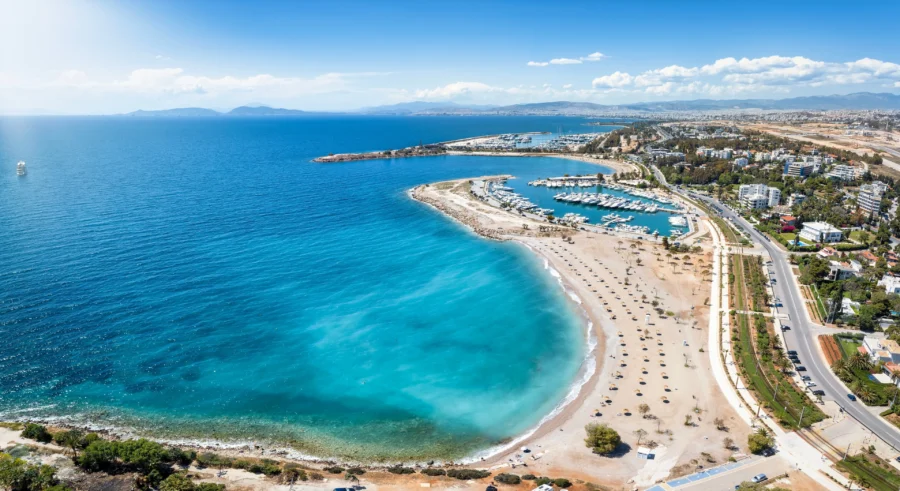
Corfu’s coastline is more varied and, honestly, easier to access.
If you’re after sandy stretches with all the amenities, Glyfada Beach delivers—sunbeds, cafes, gentle waves, the works.
Paleokastritsa mixes swimming and postcard-worthy scenery.
The water’s glassy, calm, and you can grab a boat to poke around caves nearby.
Hills frame the whole scene, making it pretty irresistible.
Up north, Sidari brings you the famous Canal d’Amour.
Legend claims couples who swim through its sandstone channel will stay together forever.
Whether you buy it or not, those rock formations are worth a look.
Hidden Coves and Secluded Spots
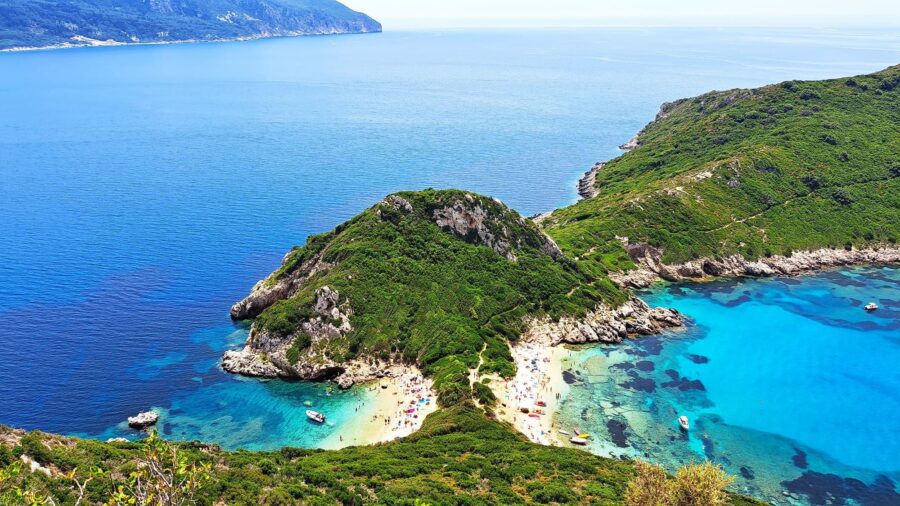
Both islands hide beaches you won’t find unless you’re really searching.
In Corfu, Porto Timoni is a double-bay stunner, only reachable by a hike or by boat.
Bring water and decent shoes—the trail’s not long, but it’s steep.
Kefalonia’s got nameless coves you can only reach by boat.
Some don’t even show up on Google Maps—just a slice of sand and that unreal clear water.
Rent a kayak or a little motorboat, and you might just get your own private swimming hole for the day.
Honestly, that’s the dream—pulling up somewhere quiet, jumping in, and forgetting about the world for a bit.
Natural Landscapes and Outdoor Adventures
Corfu and Kefalonia both serve up landscapes that make you want to linger.
You’ve got mountain peaks with sea views, quiet coves where you might spot wildlife, and plenty of reasons to stay outside all day.
Mountains and National Parks
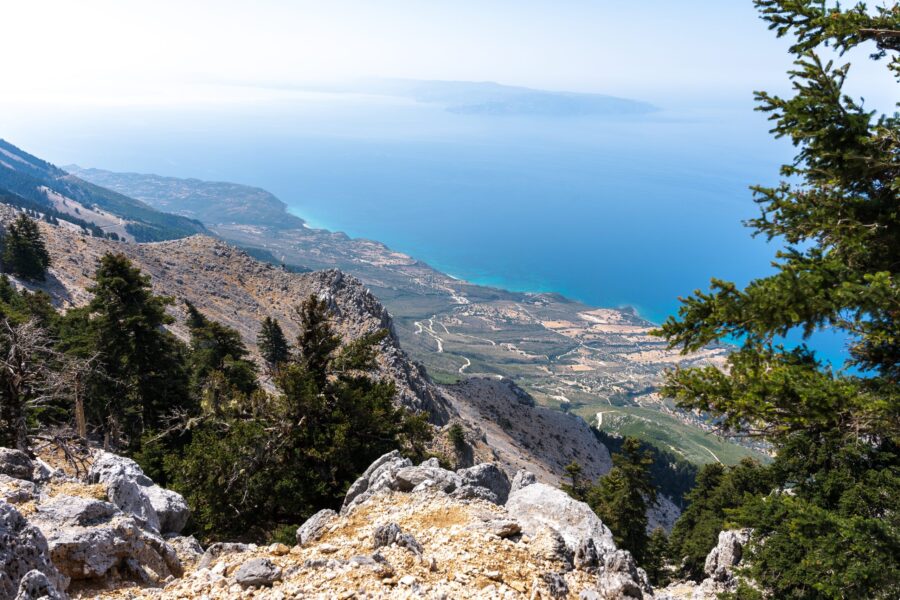
Kefalonia’s Mount Ainos is the Ionian’s highest peak, smack in the middle of Mount Ainos National Park.
Black fir forests, wild horses, and on a clear day, you can see all the way to Zakynthos.
Corfu’s Mount Pantokrator isn’t as tall but still brings the views.
Drive or hike up, and you’ll see Corfu, the Albanian coast, maybe even a bit of mainland Greece.
There’s a tiny monastery and a café at the top—perfect for lingering.
Both islands have rolling hills, olive groves, and cypress trees everywhere.
Even an aimless walk feels scenic.
If you’re into guided nature stuff, plenty of outdoor tours mix mountain drives with stops in traditional villages.
Hiking and Trekking Trails
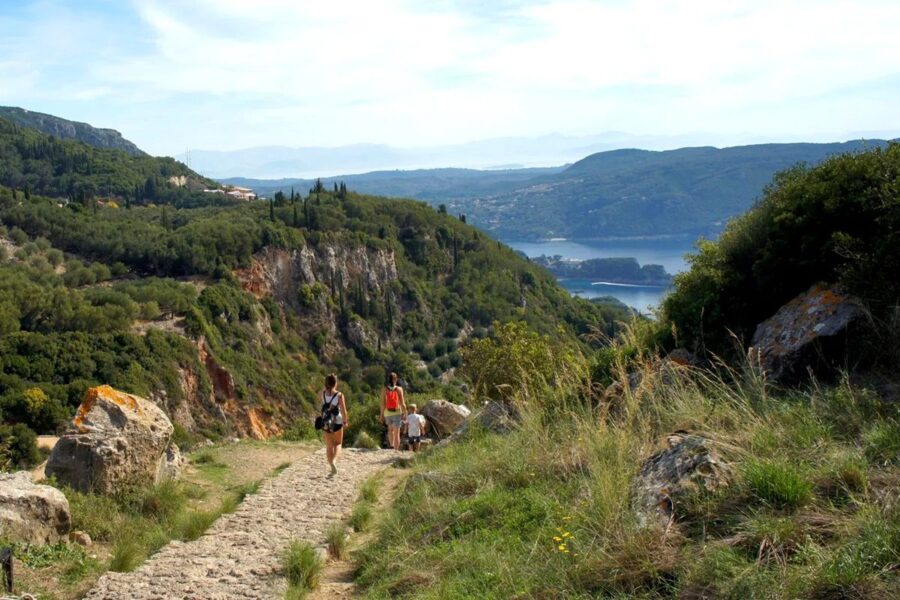
Corfu’s Corfu Trail runs the length of the island—220 kilometers, if you’re counting.
Most folks just pick a chunk for a day hike.
You’ll pass through quiet villages you’d never find otherwise.
Kefalonia’s hikes are usually shorter but steeper, especially near Mount Ainos or along the coast.
You can trek down to hidden beaches or check out limestone cliffs that drop right into the sea.
Some trails swing by caves like Drogarati—nice spot to cool off.
You won’t run into crowds on these trails.
Bring good shoes and water, though—summer heat is no joke.
Water Sports and Activities
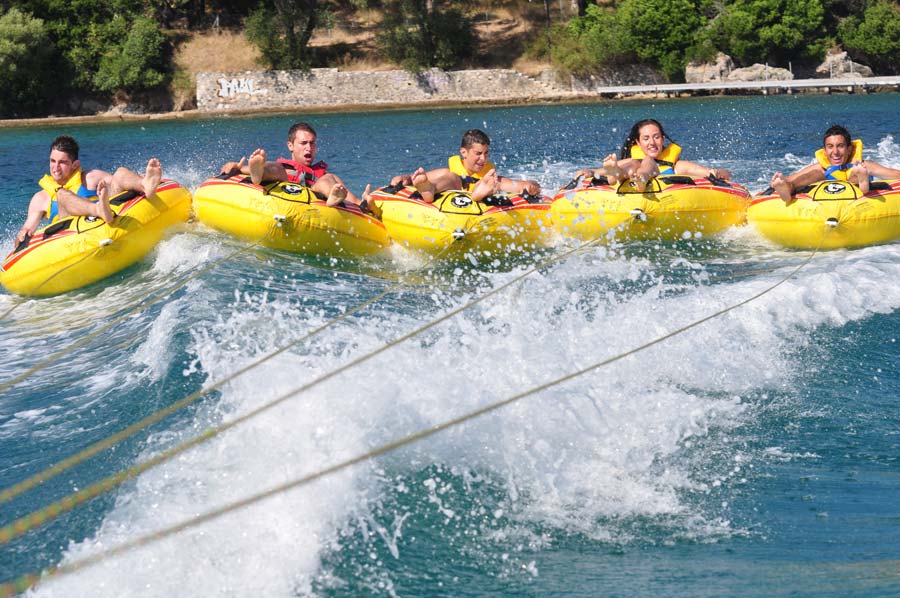
Corfu’s west coast beaches are hotspots for water sports—kayaking, paddleboarding, windsurfing, you name it.
Glyfada and Paleokastritsa have rentals on the sand, so you can just show up and go.
Kefalonia is more about sea kayaking along cliffs and snorkeling in bays so clear you’ll spot fish before you even dive.
Around Myrtos and Antisamos, you might catch a glimpse of loggerhead turtles if you’re lucky.
Boat trips are everywhere, but Kefalonia’s tend to be quieter, a bit more remote.
If you want to mix sailing with swim stops, day tours can take you to Ithaca or coves you’d never reach by car.
Cultural Heritage and Historical Landmarks
Corfu and Kefalonia wear their history on their sleeves. Venetian fortresses, pastel harbors, ancient ruins, and sacred monasteries peek out from every corner.
You’ll spot Greek, Italian, and even British touches woven into streets, buildings, and local traditions. Many of these landmarks aren’t just museum pieces—they’re still part of everyday life.
Venetian Influence and Architecture
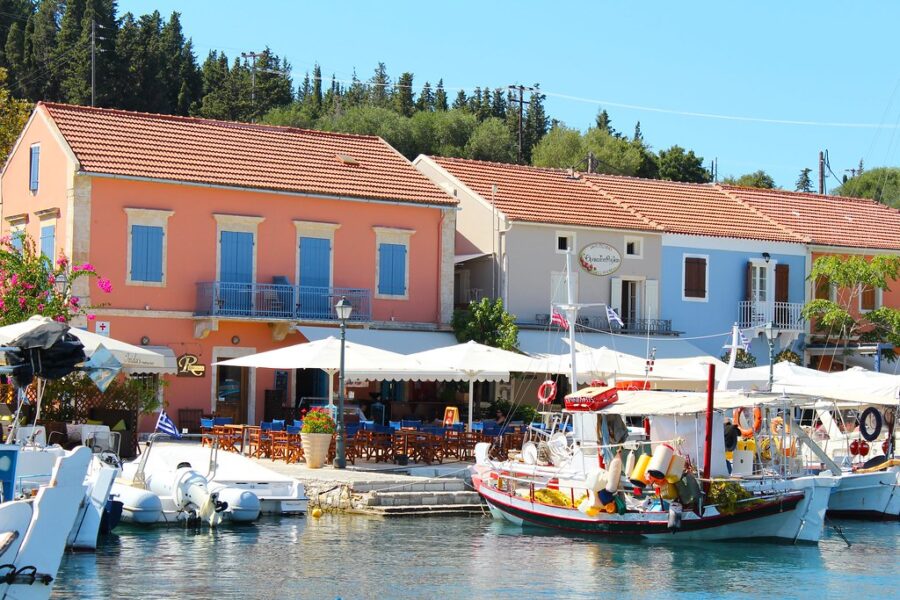
If you’ve wandered Corfu Town’s narrow lanes, you know the Venetians didn’t just leave a few pretty buildings—they left a whole vibe. Tall pastel façades, wooden shutters, and wrought iron balconies make the place feel like Venice with a Mediterranean twist.
The Old Fortress and New Fortress tower over the skyline, built to fend off Ottoman attacks. Climb up and you’ll get sweeping harbor views, plus a good dose of sea breeze.
In Kefalonia, the Venetian mark is subtler, but you’ll spot it in Fiskardo. This fishing village dodged the 1953 earthquake, so the colorful waterfront houses are originals, not replicas. Grab a coffee by the quay and it’s easy to picture 18th-century merchants unloading their cargo.
Ancient Ruins and Museums
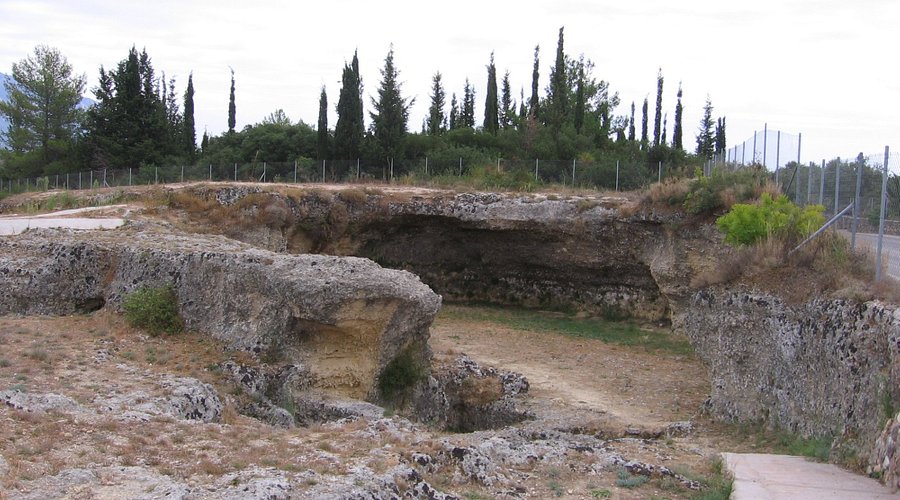
Kefalonia hides some real archaeological surprises. The Mazarakata Mycenaean Cemetery has chamber tombs carved into soft rock, dating back more than 3,000 years. Wildflowers poke through the stones, and it’s blissfully quiet—no tour bus crowds here.
At the Monastery of Agios Gerasimos, devoted to the island’s patron saint, visitors come year-round. You can see the saint’s relics and the underground cell where he lived.
Corfu leans toward historical museums rather than ancient ruins. The Archaeological Museum of Corfu displays finds from the Temple of Artemis, while smaller folk museums in villages show off traditional island life. If military history is your thing, the fortress museums deserve a slow wander.
UNESCO Sites and Iconic Monuments
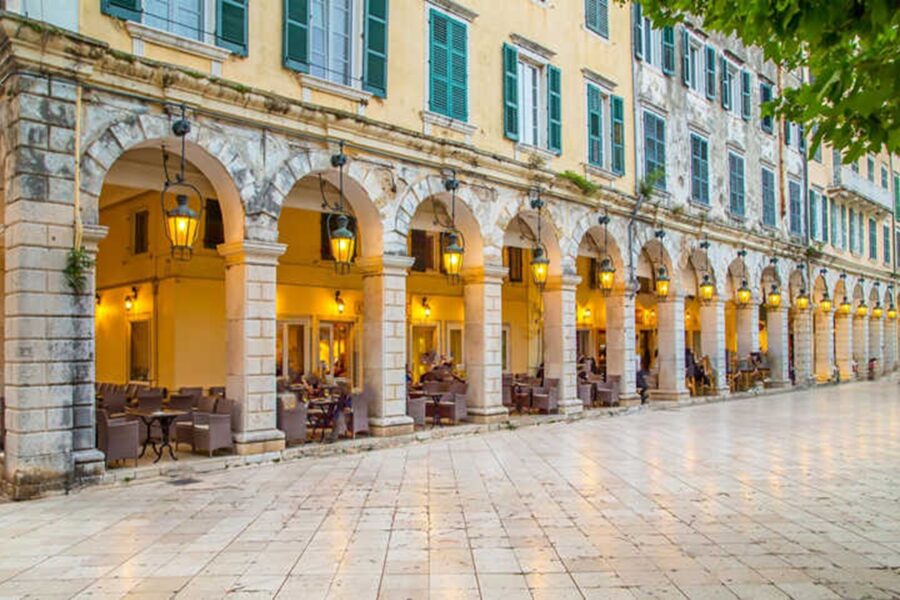
The heart of Corfu Town is a UNESCO World Heritage Site, and it really earns that title. Strolling the Liston Promenade—a French-built arcade inspired by Paris’s Rue de Rivoli—is as much about people-watching as it is about the architecture.
The Achilleion Palace, built for Empress Elisabeth of Austria, goes all-in on neoclassical style and Greek myth murals. It can feel a bit over the top, but the gardens and views are worth it.
In Kefalonia, the Assos Castle perches on a narrow peninsula, its ruins still guarding the turquoise bay below. The hike up winds through pines and rewards you with one of the most peaceful outlooks on the island.
Where to Stay: Best Towns and Villages
Corfu and Kefalonia each have towns that fit a range of travel styles. Some spots buzz with beaches, bars, and family-friendly resorts. Others are sleepy fishing villages where the sea sets the pace.
You’ll also stumble on upscale spots with boutique hotels and private villas for a more polished retreat.
Popular Resorts and Family Areas
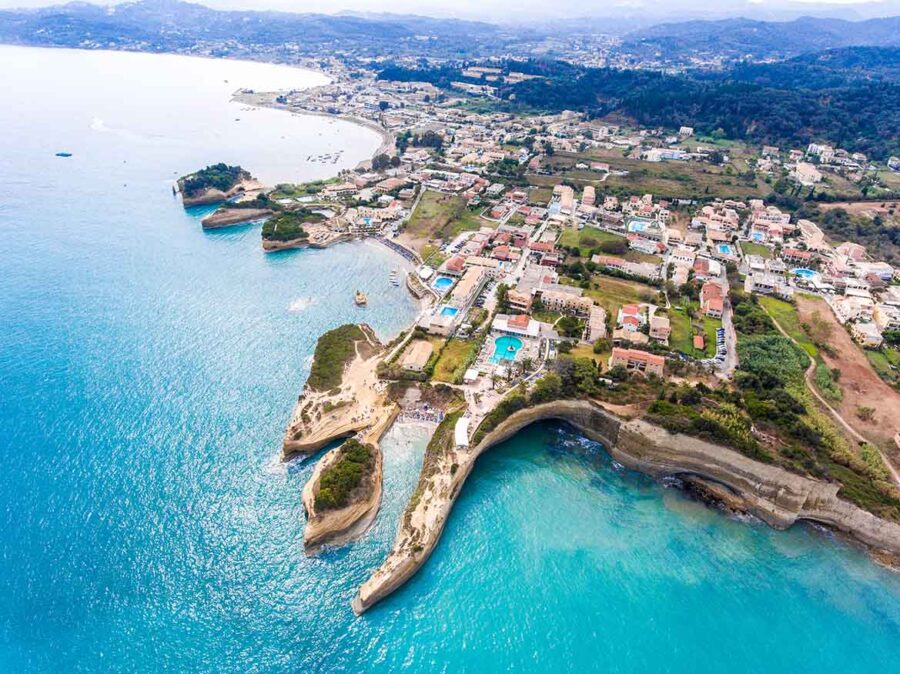
If you want easy access to beaches, restaurants, and activities, bigger resort towns will call your name.
In Corfu, Sidari is a hit for its sandy beaches and shallow water—great for families. It’s near Canal d’Amour, which is worth a stroll.
Kavos is the opposite: all about nightlife, loud and busy, definitely not the spot for a quiet getaway.
Over in Kefalonia, Lassi makes a solid base for first-timers. It’s close to the airport, packed with tavernas, and boasts some of the island’s best beaches like Makris Gialos.
Skala is another good bet, with a long sandy beach and a mix of hotels and apartments you can easily find on Booking.com.
Traveling with family? Argostoli, Kefalonia’s main town, has a pleasant waterfront, plenty of shops, and is a short drive from calm beaches.
Authentic Fishing Villages
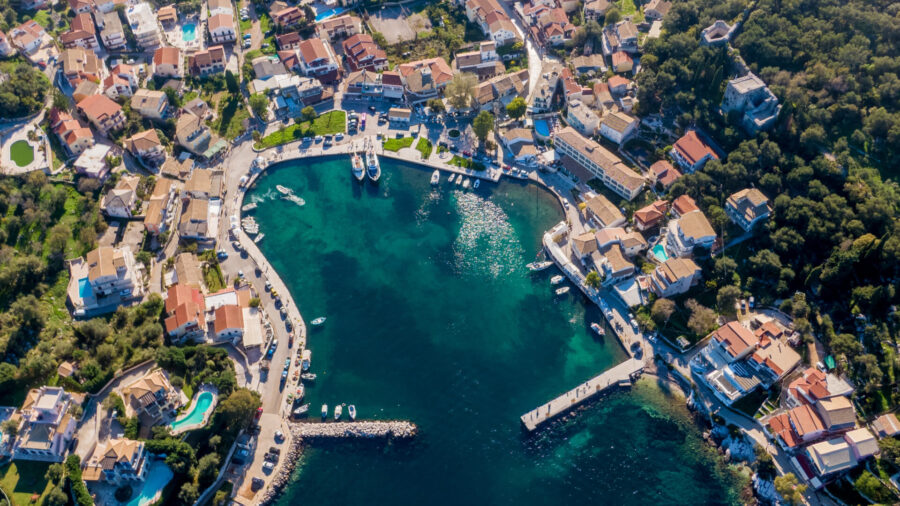
For a slower pace, the fishing villages are where you can really soak up the local atmosphere.
In Corfu, Kassiopi blends small-town charm with enough cafés and tavernas to keep evenings lively. The harbor is lovely for a morning stroll before the tour boats show up.
Agios Stefanos is even smaller—just a few tavernas and a quiet bay, ideal for unwinding.
Kefalonia’s Fiskardo is famous for its pastel-colored houses and sailboats bobbing in the harbor. It’s one of the few villages that survived the 1953 quake intact, so the architecture is the real deal.
Agia Efimia is another gem—calm, scenic, and a great base if you want to explore nearby coves by boat.
Don’t expect big resorts in these spots; you’ll find smaller hotels or family-run rooms.
Luxury and Boutique Accommodations
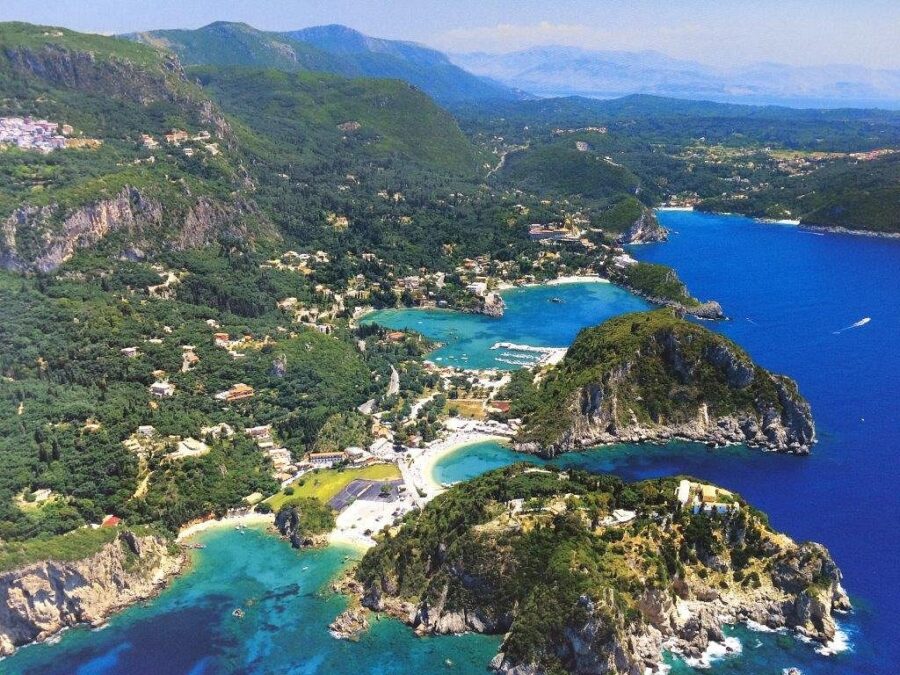
If you’re after something more upscale, both islands have areas known for boutique stays and private villas.
In Corfu, Dassia has several high-end resorts, some with private beaches. It’s also central, so you can explore the island without spending hours in the car.
Corfu Town has boutique hotels tucked into historic Venetian buildings, blending comfort with culture.
Kefalonia’s Fiskardo stands out for luxury—many villas here have infinity pools with Ionian Sea views.
Lixouri, on the Paliki Peninsula, feels quieter and more exclusive, with a few upscale hotels and easy access to less-crowded beaches.
If you’re planning a special trip, you might want to browse Expedia for private villas, boutique hotels, or adults-only resorts.
Some of these areas are remote, so renting a car really helps—especially if you want to go beyond your hotel’s front door.
Food, Drink, and Local Flavors
Corfu leans into Venetian-influenced comfort food and slow-cooked stews, while Kefalonia’s plates highlight earthy pies, grilled meats, and crisp island wines. Both islands rely heavily on fresh olive oil, seasonal vegetables, and seafood that’s often caught the same day.
Traditional Dishes of Corfu
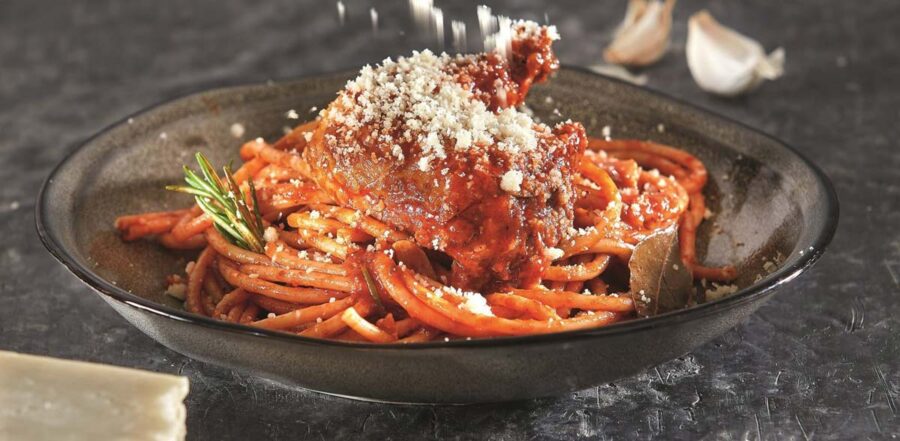
If you love hearty, saucy dishes, Corfu will spoil you. The island’s pastitsada—beef or rooster braised with tomato, cinnamon, and cloves—comes piled over thick pasta.
You’ll also find sofrito, thin veal slices in a garlicky white wine sauce, and bourdeto, a fisherman’s spicy red pepper fish stew.
I still remember my first bourdeto in a tucked-away taverna near Benitses. The fish was so fresh it almost melted, and the sauce had just enough heat to make you reach for more bread.
Many places serve pita stuffed with local cheese or greens alongside the meal.
Seafood is everywhere, but it’s rarely overcomplicated—grilled sardines, octopus with lemon and olive oil, or fried whitebait. The olive oil here deserves a mention; lots of families still press their own from groves passed down through generations.
Kefalonia’s Culinary Specialties
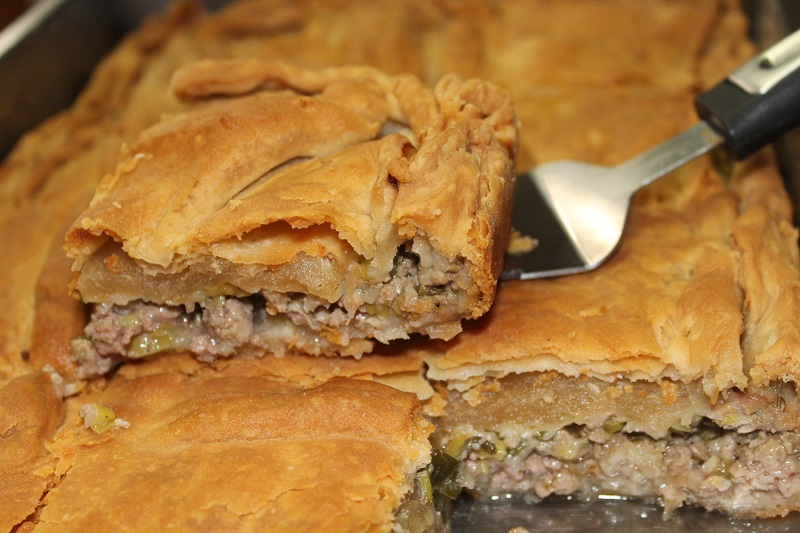
Kefalonia’s food feels a bit more rustic. The kreatopita (meat pie) might be the most famous—spiced lamb or beef layered in flaky pastry.
You’ll spot moussaka and souvlaki too, but the seasoning leans earthier than in Corfu.
On my last visit, I tried cod pie in Argostoli, a dish you rarely see outside the island. It’s a nod to the days when salted fish was a staple.
Grilled meats are big here—lamb chops, pork skewers, and chicken souvlaki, usually cooked over open coals. Seafood still features, especially in coastal villages like Fiskardo, but meat often takes center stage inland.
Local vegetables and peppery olive oil round out the flavors.
Tavernas, Wines, and Local Products
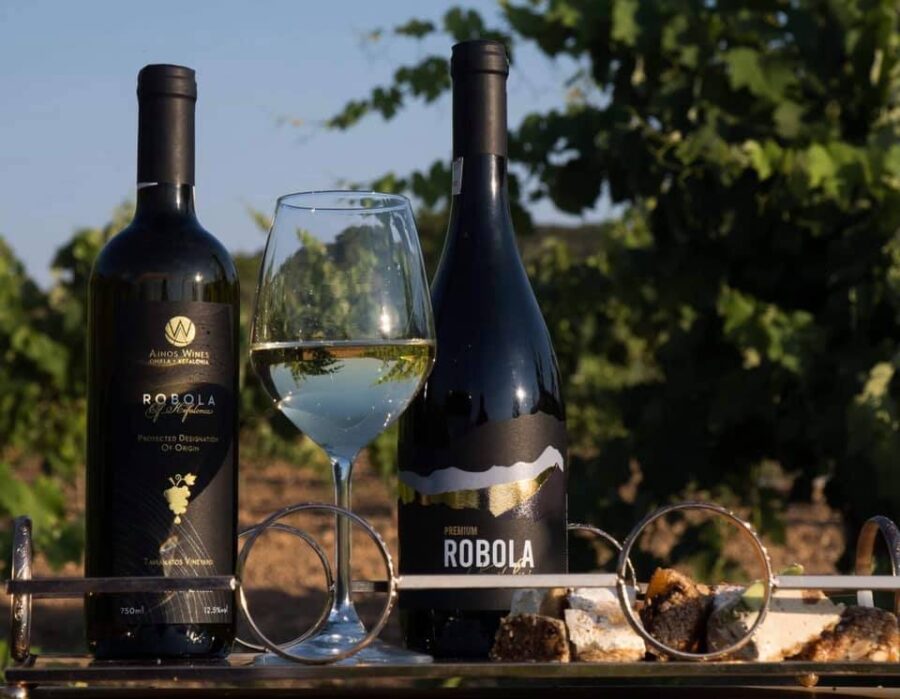
You’ll find plenty of tavernas on both islands, but the vibe shifts. In Corfu, harborside spots buzz with music and late-night service.
Kefalonia’s best meals often happen in small, family-run places where the menu changes daily.
Kefalonia is home to Robola wine, a dry white with citrus notes that pairs beautifully with grilled fish or cheese pies. You can visit vineyards in the Omala Valley to taste it at the source.
Corfu also produces wine, but it’s less of a headline act—you’re more likely to get a local house red or white in a carafe.
Don’t skip the markets. In Corfu Town, stalls overflow with olives, honey, and herbs. Kefalonia’s rural roadside stands sell jars of thyme honey, homemade cheese, and bottles of olive oil from nearby groves.
These make great edible souvenirs—and honestly, they taste even better when you remember the little stand where you bought them.
Nightlife and Social Scene
The two islands take pretty different approaches after dark. One leans into late nights with packed dance floors and cheap cocktails. The other keeps things low-key with wine by the water and music drifting from small bars.
Corfu’s Vibrant Nightlife

If you’re after energy and noise, Corfu delivers. The nightlife hub is Kavos, a strip lined with clubs, bars, and beach venues that stay open until sunrise.
It’s unapologetically geared toward younger crowds and group holidays. Expect foam parties, neon paint nights, and drink deals that make it easy to lose track of time.
Corfu Town offers a more refined evening with cocktail lounges, rooftop terraces, and live music tucked between Venetian buildings. You can start with a quiet dinner in the old town, then wander into a late-night bar without feeling like you’ve stepped into a rave.
During peak summer, the island’s nightlife barely stops. Even in smaller resorts like Sidari or Ipsos, you’ll find karaoke bars, sports pubs, and a few dance spots that keep things lively.
Kefalonia’s Relaxed Evenings
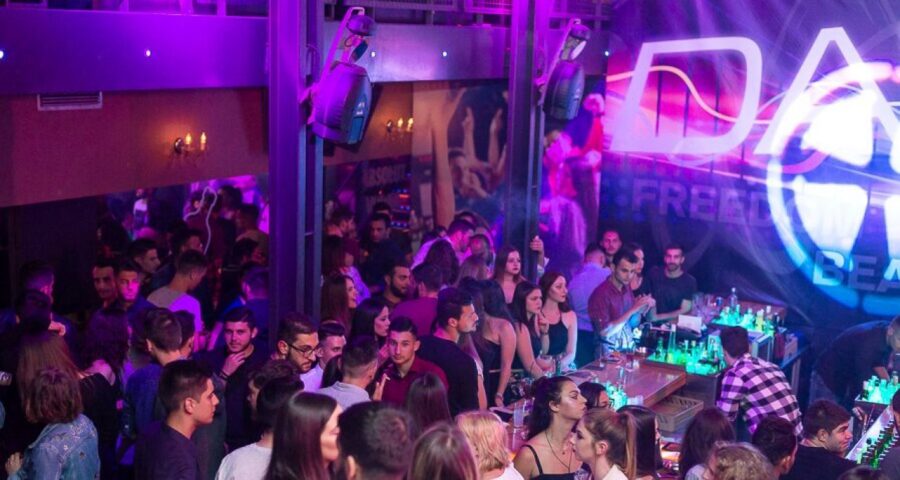
Kefalonia goes the opposite way. Nights here are slower, more about conversation than clubbing. In Argostoli, the capital, you’ll find a handful of modern bars and lounges, but they rarely match Corfu’s intensity.
Music is usually acoustic or soft electronic, and people linger over drinks rather than rush from bar to bar.
In places like Fiskardo or Lassi, evenings are spent at seaside tavernas, where you can sip local wine while fishing boats bob in the harbor. The atmosphere feels more like a dinner party than a night out.
You can still find late-night cafés and a few dance-friendly spots, but they’re scattered and modest. Perfect if you want a drink without shouting over the bass.
Beach Clubs and Entertainment
Both islands have beach clubs, but they play different roles. In Corfu, especially near Kavos and Glyfada, beach clubs double as day-to-night venues.
You might spend the afternoon on a sunbed, then slide straight into a DJ set with cocktails in hand.
Kefalonia’s beach bars are more about daytime relaxation. Think cushioned loungers, chilled playlists, and sunset mojitos before heading elsewhere for dinner.
Antisamos Beach has a couple of livelier spots, but they still keep the volume lower than Corfu’s party beaches.
If you like the idea of combining the sea, music, and socializing, Corfu’s beach clubs lean toward high-energy events. Kefalonia’s keep things casual and scenic.
The choice really comes down to whether you want to dance barefoot in the sand at midnight or just watch the stars with a drink.
Unique Experiences and Hidden Gems
Some of the most memorable moments on these islands come from places and events you might miss if you stick to the main tourist trail. Natural wonders hide beneath the surface, and traditions linger in small villages.
There’s plenty here that feels personal and special.
Melissani Lake and Drogarati Cave
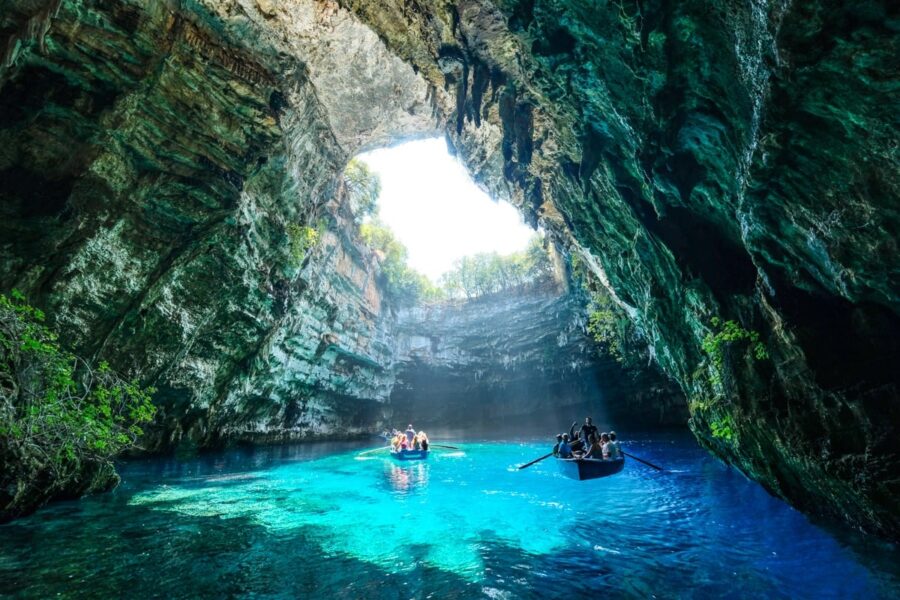
If you’ve only got time for one natural wonder in Kefalonia, make it Melissani Lake. This partly open-roof cave glows an unreal shade of blue when the midday sun hits.
You’ll drift across the water in a little rowboat, the guide’s oar sending out soft ripples that echo around the cavern. It’s one of those surreal moments you just don’t forget.
The nearby Drogarati Cave? Totally different vibe. It’s massive—big enough to host concerts, and the acoustics are honestly wild.
Stalactites hang everywhere, looking like they’ve been growing for centuries. Seriously, wear good shoes; the floor gets slick.
I remember ducking my head through the narrow entrance and feeling the temperature drop fast. It’s the kind of spot where you slow down without even realizing, just soaking up the stillness.
You can easily pair both sites in a single trip. They’re only a short drive apart, and since they’re close to the Ithaca ferry port, you might even tack on another island.
Cultural Events and Festivals
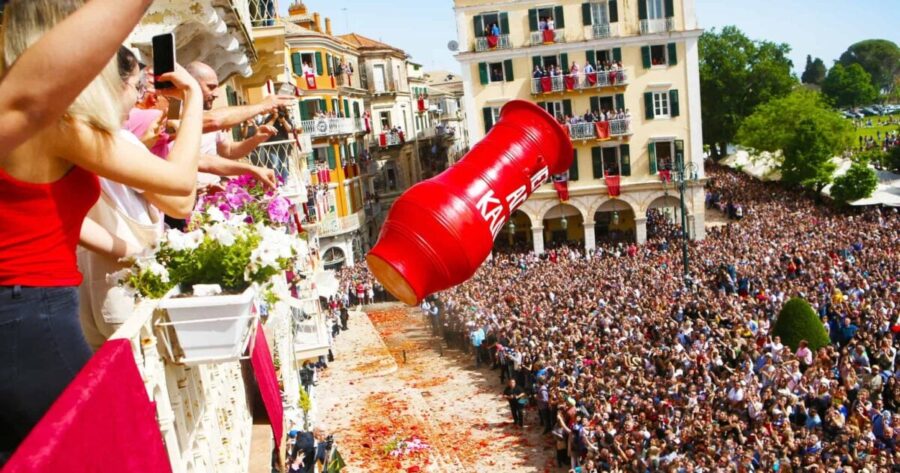
Corfu and Kefalonia both keep their traditions alive, but not in a cheesy, put-on way. In Corfu, Easter is huge—locals toss clay pots from balconies in the “pot-throwing” custom.
The crash of the pots is enough to make you jump, even if you know it’s coming. There’s just something thrilling about it.
Kefalonia’s August Snake Festival is smaller but honestly pretty fascinating. Harmless snakes show up in the village of Markopoulo, slithering around the church grounds.
Locals see it as a good omen, and visitors can usually watch if you’re curious (and not squeamish).
Summer brings panegyria—village fairs with live music, dancing, and food that goes late into the night. If you stumble on one, don’t just stand there.
Grab a plate of grilled meat, jump into the circle dance, and you’ll feel like part of the family before you know it.
Filming Locations and Literary Ties
If you’ve seen Captain Corelli’s Mandolin, you’ve already glimpsed Kefalonia’s coastline. They filmed much of it around Sami and Antisamos Beach, and you’ll recognize the scenery as soon as you arrive.
The water is just as clear as it looks on screen—maybe even better.
Kefalonia also has quieter literary connections. British author Louis de Bernières, who wrote the novel, spent time here digging into the island’s WWII history.
You’ll still meet locals who remember the filming days and have a story or two if you ask.
Corfu, on the other hand, is tied to the Durrell family—Gerald Durrell’s memoir My Family and Other Animals paints a vivid picture of 1930s island life.
If you’ve read it, you might spot familiar landscapes wandering the countryside.
Frequently Asked Questions
Corfu leans into its Venetian and multicultural past. Kefalonia feels more rural, more tied to its wild landscapes.
Food, scenery, and even how each island handles tourism can feel worlds apart once you’re actually there.
What unique cultural experiences distinguish Corfu from Kefalonia for travelers seeking local immersion?
In Corfu, you can wander the Old Town’s narrow lanes and spot architecture influenced by Venice, France, and Britain. Sometimes you’ll catch a philharmonic band playing in the main square—goosebumps, honestly.
Kefalonia’s villages are quieter, with traditions rooted in fishing, winemaking, and small-town festivals. You’re more likely to join a locals’ feast in a mountain hamlet than a city parade.
Can you highlight the differences in the culinary scenes between Corfu and Kefalonia?
Corfu’s food shows off its Italian influence, with dishes like pastitsada (beef in tomato sauce with pasta) and sofrito. Olive oil recipes get passed down for generations, and you’ll taste the history.
Kefalonia is all about meat pies and fresh seafood, often caught that very morning. Don’t skip the island’s Robola wine if you like your whites crisp and dry.
What are the notable contrasts in landscape and nature between Corfu and Kefalonia?
Corfu stays greener, with rolling hills, cypress trees, and hidden coves. The north has rugged cliffs, while the south offers softer, gentler beaches.
Kefalonia feels bigger and more dramatic, with tall mountains, caves, and long stretches of untouched coastline. Myrtos Beach—white pebbles, turquoise water—gets photographed for good reason.
Could you shed light on the seasonal tourist influx in Corfu versus Kefalonia and its impact on the travel experience?
Corfu gets packed in summer, especially when cruise ships roll in. Streets fill up, prices jump, and you’ll notice the crowds in Old Town.
Kefalonia also sees more visitors in July and August, but it rarely feels as jammed. If you want lower prices and fewer people, try spring or early autumn and keep an eye out for cheap flights.
How do the historical sites of Corfu compare with those in Kefalonia in terms of richness and visitor engagement?
Corfu’s Old Fortress and Achilleion Palace are must-sees, with layered histories and well-kept details. Museums usually have English-language exhibits, so you can really get into it.
Kefalonia’s history is quieter but still fascinating. You can explore ancient ruins, WWII memorials, and monasteries that feel almost untouched by tourism.
In terms of accessibility and transportation, what should travelers consider when choosing between Corfu and Kefalonia?
Both islands have international airports. Corfu’s airport gets more flights from all over Europe, which honestly just makes it easier to snag a direct route—less stress, more time for actual vacation.
Kefalonia’s public transport? Pretty sparse, to be honest. If you want to see more than just your hotel pool, you’ll basically need to rent a car.
If you’re booking flights or ferries ahead of time, you might want to look into travel insurance through this provider. Sometimes things go sideways, and it’s just nice to have a backup plan.

